The Subaru Ascent is one of the smaller three-row crossovers on the outside, but not unlike the Honda Pilot, engineers managed to squeeze as much interior space as possible from that footprint to create one of the most space-efficient choices in the segment. That means you get a third row that's actually comfortable for teens and most adults, as well as one of the more useful cargo areas behind that third row.
The official numbers say it has 17.6 cubic-feet of space, but again, like the Pilot, the Ascent has an underfloor storage area that frees up a considerable amount of space for bags.
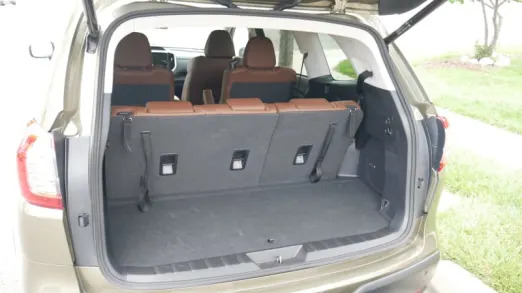

Here is the space behind the third row with the floor raised and the floor lowered. You can clearly see how much depth is gained.
Sadly, a not-insignificant amount of that underfloor space is eaten up by spare tire-related tools. This is ultimately the reason why the Pilot (and Kia Telluride) can hold more than the Ascent.
Before we get to the bags, note how the floor is actually hinged upward against the seat back. This means it doesn't have to be removed from the vehicle as in the Kia Telluride (the Pilot's floor slides down to become the bottom of the underfloor area).
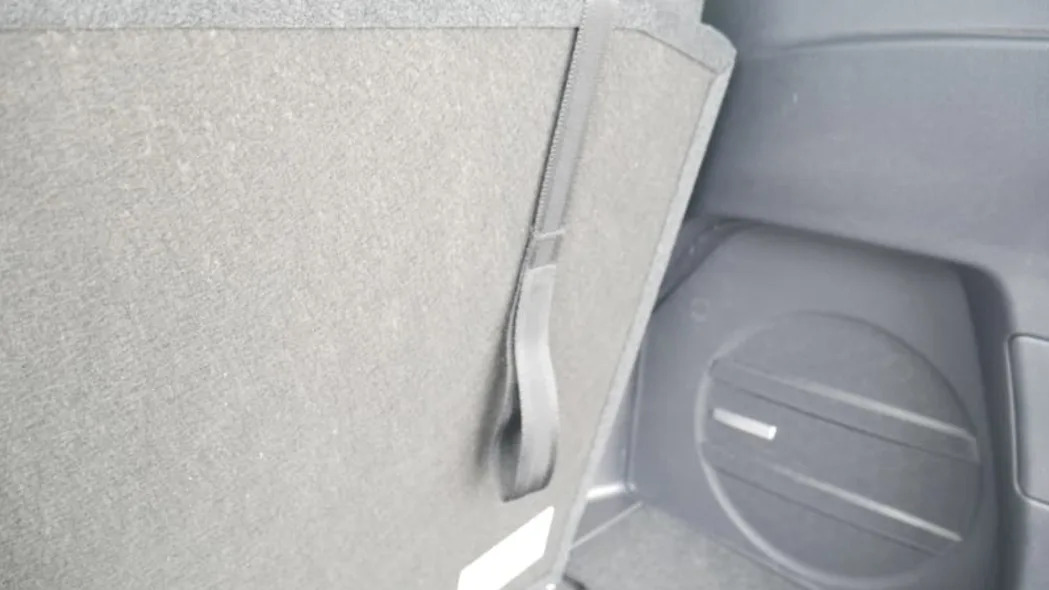
To keep that floor board up, Subaru came up with this clever solution: Repurpose the third-row folding mechanism straps and their Velcro backing. Just de-Velcro them from the carpeted seat back, lift into air, lift up floor board, attach Velcro to floor board. Done.
I believe this is new to the Ascent, possibly for last year's midcycle update, as my previous Ascent test vehicles did not have it. You had to remove the floor completely before.
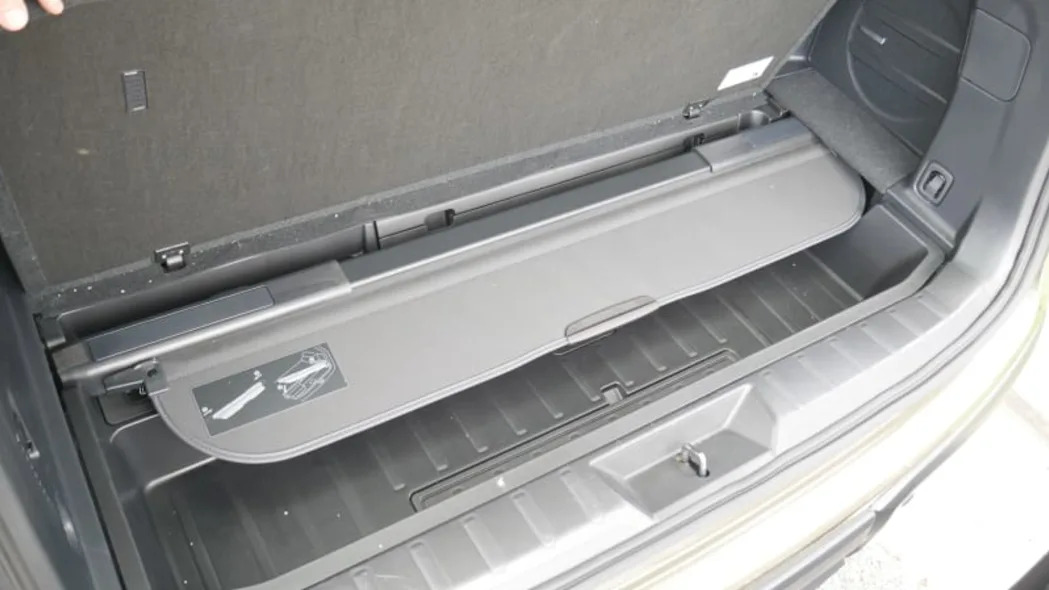
The Ascent has a cargo cover, which can be stored under the floor. This is obviously handy, but it does mean that if you forget to take it out, you can't use the underfloor bonus space. As such, I'll be testing with and without the bonus space.
As with every luggage test, I use two midsize roller suitcases that would need to be checked in at the airport (26 inches long, 16 wide, 11 deep), two roll-aboard suitcases that just barely fit in the overhead (24L x 15W x 10D), and one smaller roll-aboard that fits easily (23L x 15W x 10D). I also include my wife's fancy overnight bag just to spruce things up a bit (21L x 12W x 12D).
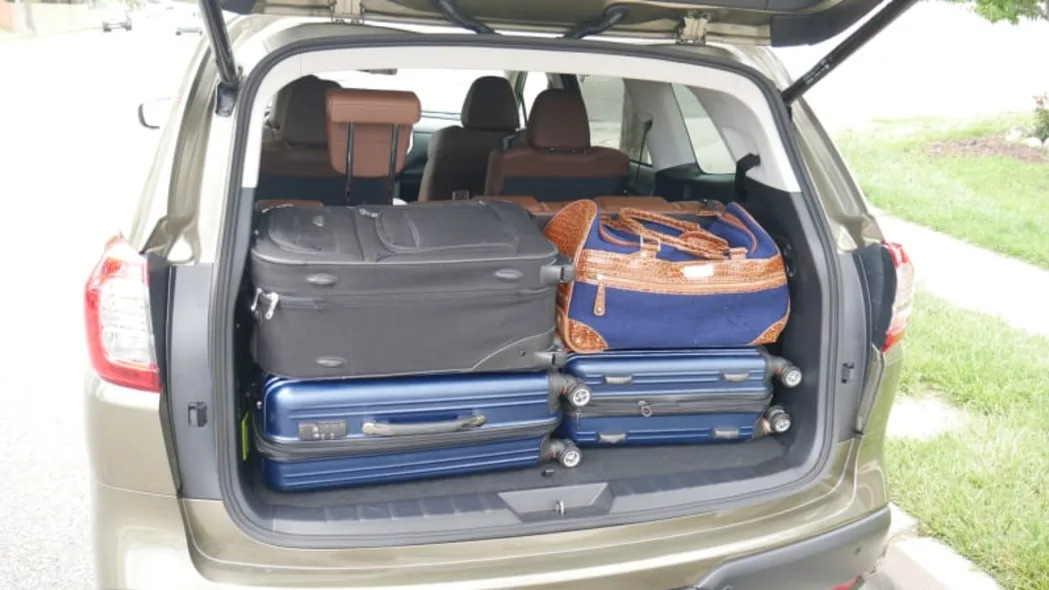
This would be one of the bigger check-in bags, one medium roll-aboard, the smaller blue roll-aboard, and of course, fancy bag. Going higher would not be possible without moving the third row into an uncomfortably upright angle. I'm guessing this is what Subaru means by 17.6 cubic-feet. This is still better than the Toyota Highlander.
OK, now let's chuck the cargo cover and prop up that floor.
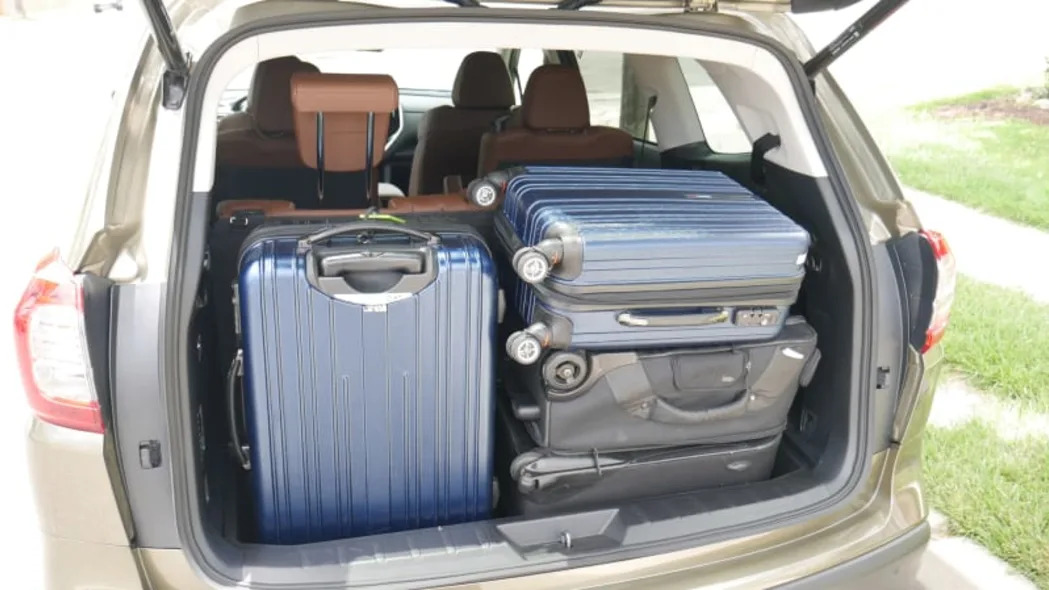
This would be all the bags except the biggest and smallest. It was also easy to load and you probably could prop something up above the blue against the super-tall head restraint.
There is an alternative formation, however, which I apparently discovered back in December 2021 in an unpublished Ascent luggage test I completely forgot about. I blame the deadly cocktail of pandemic, holidays and a 16-month-old.
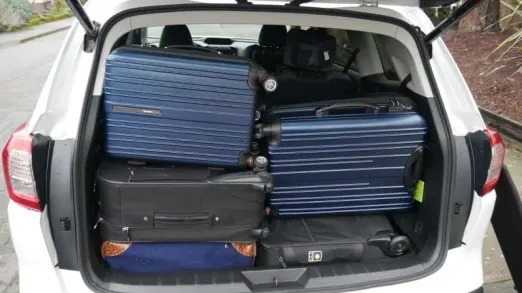
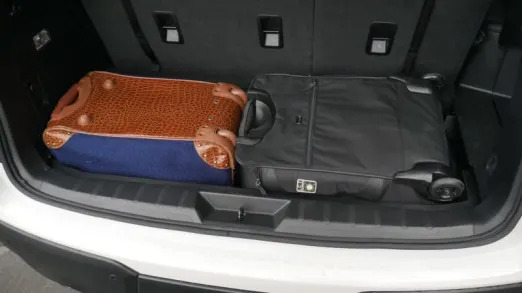
Apparently, the fancy could technically fit on its belly adjacent to the spare tire tools. One of the medium black bags can then fit on its belly next to it. This effectively adds the fancy bag to the mix.
Honestly, I don't love this. If there was stuff in the fancy bag, it probably wouldn't work, and the rest of the bags are rather haphazardly placed. Visibility would be impinged, and the blue bag is definitely resting against that tall head restraint.
So, I'm going with the most recent formation as Luggage Test canon, with this as a bonus possibility.
Either way, the Ascent comes just under the Kia Telluride, Honda Pilot, Volkswagen Atlas and, to a lesser extent, Hyundai Palisade on the three-row crossover leaderboard. Which I really do need to get around to creating.



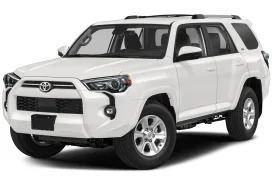

Sign in to post
Please sign in to leave a comment.
Continue